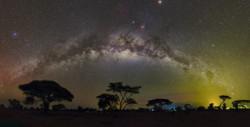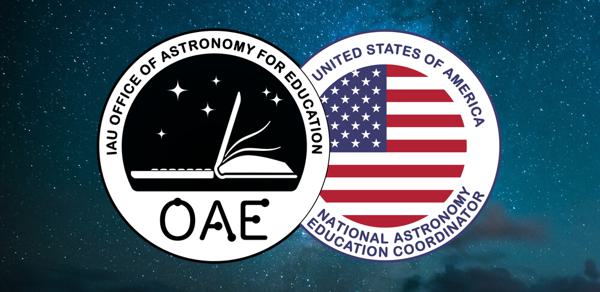Glossary term: 星際消光
Description: 星際消光是星際介質對來自天文光源的光吸收和散射的呲合效應。星際介質是存在於星系中恆星之間的空間中的物質,由氣體和亞微米大小的塵埃粒子組成。與氣體粒子相比,星際塵埃對星光的影響要大得多。肉眼可以觀察到銀河系中塵埃和氣體的巨大通道,就像數百萬顆恆星微弱光芒之間的縫隙。消光使對包含大量氣體和塵埃的區域的觀測變得困難。消光在波長較短處通常較強,使天體看起來更紅(星際紅化)。天文學家根據星際消光的強弱隨波長的變化特性,通常使用較長的波長——如紅外線或亞毫米光——來研究塵埃籠罩的區域,如恆星形成區。
Related Terms:
See this term in other languages
Term and definition status: The original definition of this term in English have been approved by a research astronomer and a teacher The translation of this term and its definition is still awaiting approval
This is an automated transliteration of the simplified Chinese translation of this term
The OAE Multilingual Glossary is a project of the IAU Office of Astronomy for Education (OAE) in collaboration with the IAU Office of Astronomy Outreach (OAO). The terms and definitions were chosen, written and reviewed by a collective effort from the OAE, the OAE Centers and Nodes, the OAE National Astronomy Education Coordinators (NAECs) and other volunteers. You can find a full list of credits here. All glossary terms and their definitions are released under a Creative Commons CC BY-4.0 license and should be credited to "IAU OAE".
If you notice a factual or translation error in this glossary term or definition then please get in touch.
Related Media
駕駛途中
Credit: Marcin Zajac/IAU OAE
License: CC-BY-4.0 Creative Commons 姓名標示 4.0 國際 (CC BY 4.0) icons
猴麵包樹大道上空的銀河
Credit: Amirreza Kamkar/IAU OAU
License: CC-BY-4.0 Creative Commons 姓名標示 4.0 國際 (CC BY 4.0) icons
安波塞利國家公園上空的銀河拱門
Credit: Amirreza Kamkar/IAU OAE
License: CC-BY-4.0 Creative Commons 姓名標示 4.0 國際 (CC BY 4.0) icons
Teide Observatory
License: CC-BY-4.0 Creative Commons 姓名標示 4.0 國際 (CC BY 4.0) icons
俄勒岡海岸
Credit: Marcin Zajac/IAU OAE
License: CC-BY-4.0 Creative Commons 姓名標示 4.0 國際 (CC BY 4.0) icons













